“Hegemonic Masculinity” serie, Reunion Island 2021
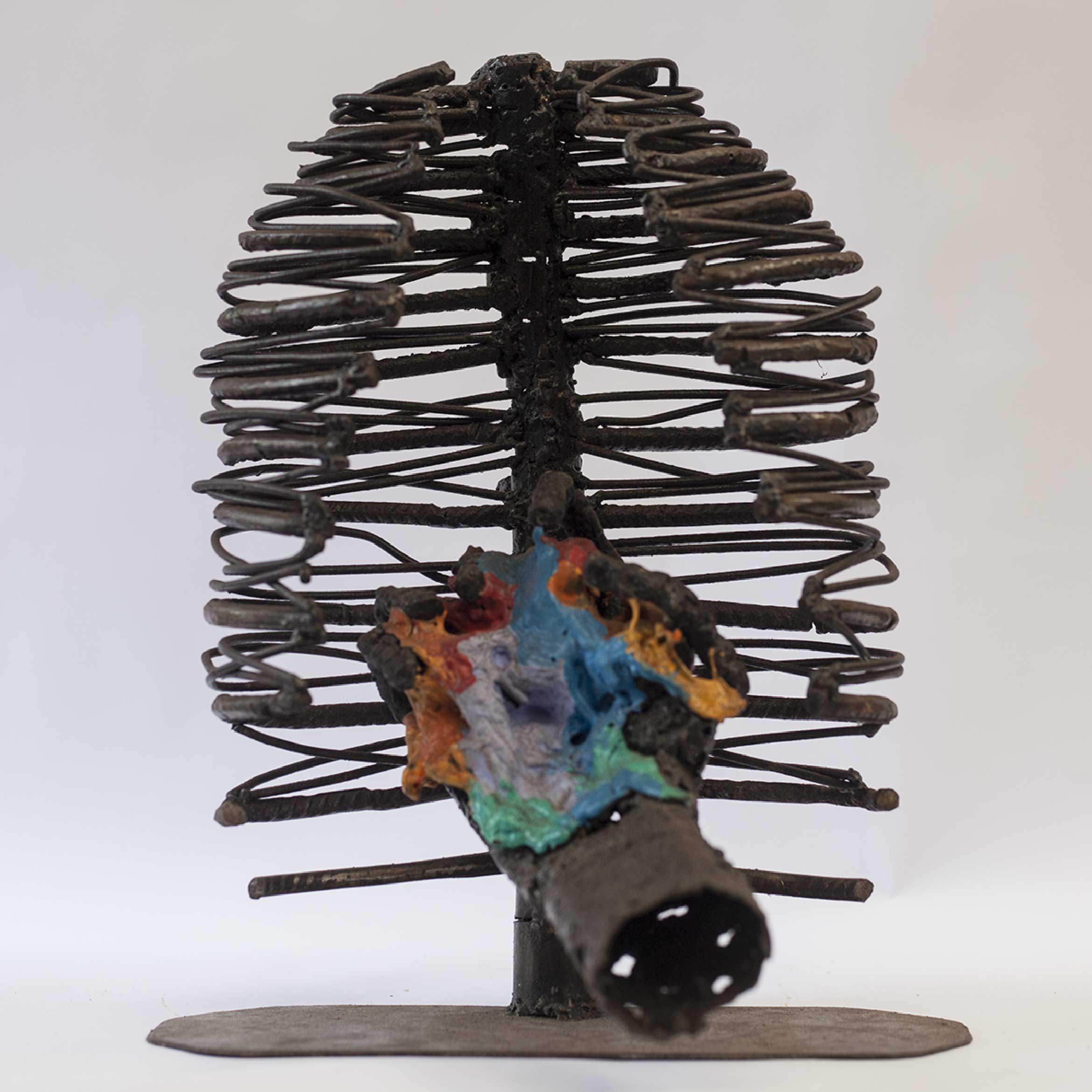
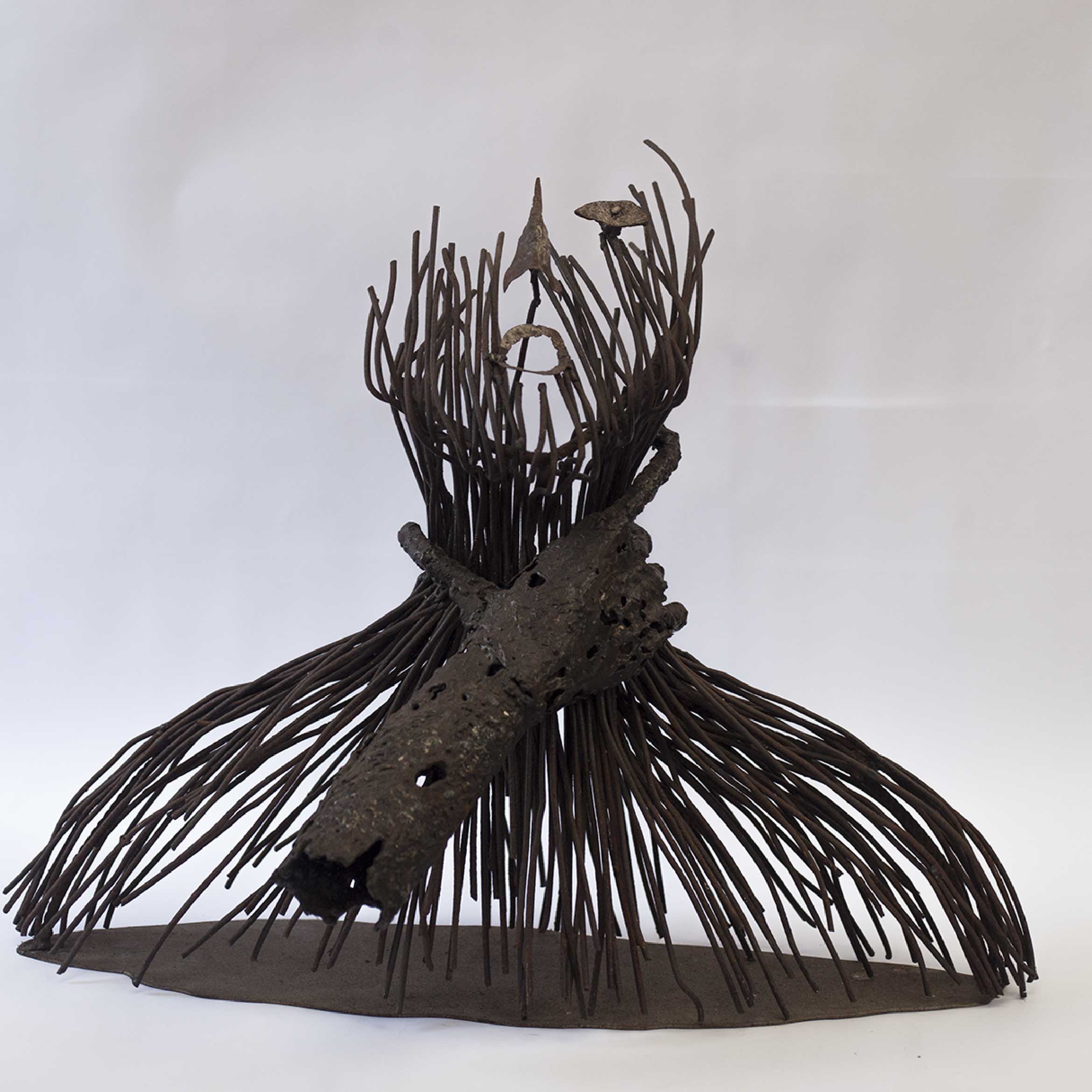

I created a series of three sculptures to highlight and introduce men to the notion of hegemonic masculinity. I worked on it for several months. The experience was heavy and intense with a lot of necessary personal reassessments. It was a learning experience overall. As a heterosexual man, I have myself been confronted with toxic masculinity, while also having dominant behaviors that I deconstruct daily. This series is an invitation to realizing how hegemonic masculinity impacts individuals, and how it is deeply embedded in our patriarchal society.
I wanted to show hegemonic masculinity as body parts dominated without consent. This hegemonic masculinity is represented as a molten steel hand : rugged and full of holes as if an incurable sickness had devoured the hand and its owner. I chose to liken hegemonic masculinity to a sickness because men are not born with these toxic behaviors, they are contaminated by them : they are told to be competitive, to suppress emotions or else be excluded from the dominant group and suffer. Still, by lacking self-reflection men become complicit and strengthen this hegemonic masculinity.
The first sculpture is called “Asphyxia”. The rotten hand has its grip on the throat, strangling and suffocating the victim to the point their voice fades. Head tilted back and mouth gasping for air, the victim is immobilized and desperately looking for a way out. The absence of consent is apparent through the tilted head and the distressed face.
Asphyxia : 55x55x30cm
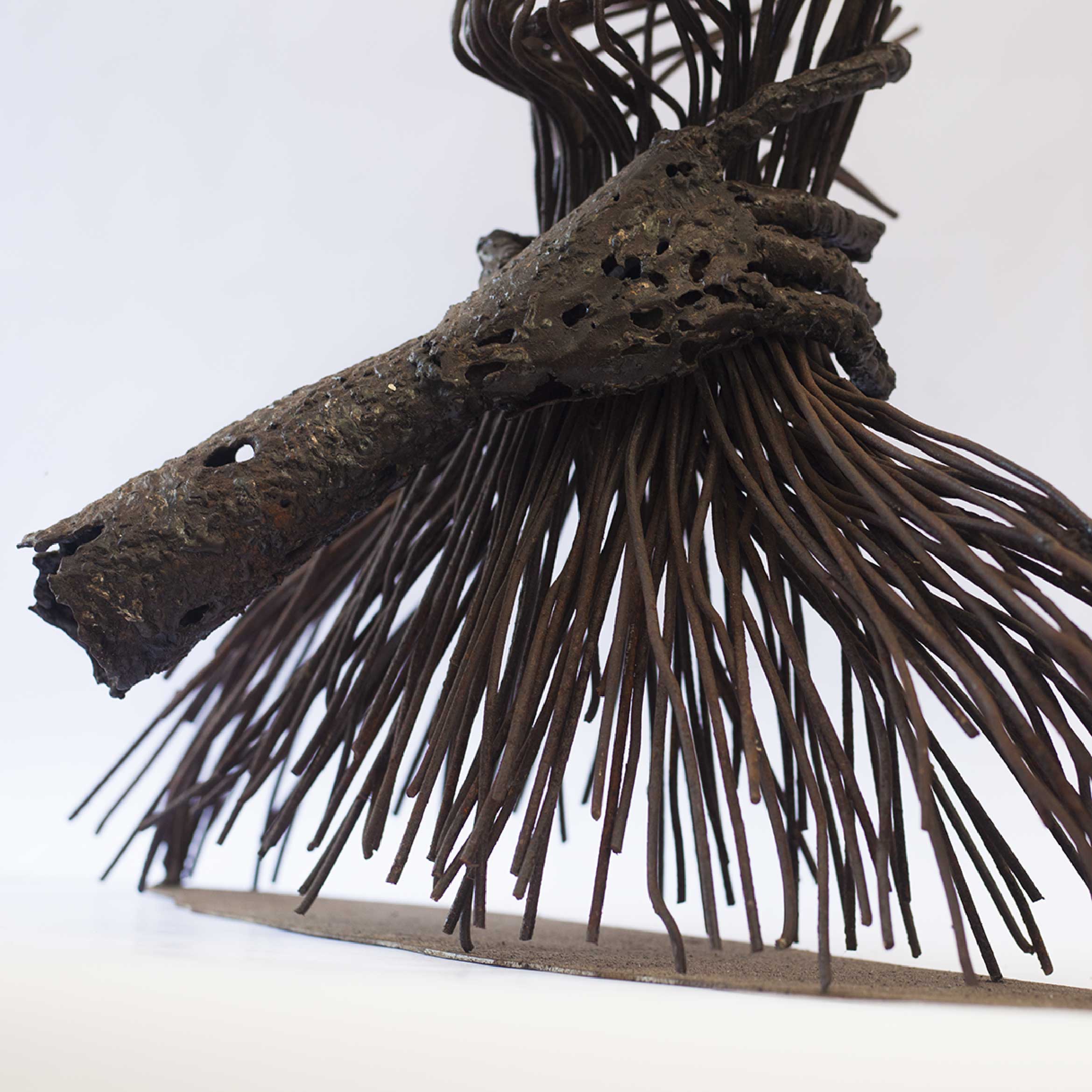


On the second sculpture “Consent”, the rotten hand grips the right thigh of the victim near their crotch. One may wonder : did the man get consent before grabbing the other’s thigh this way ? I chose to place the hand close to the crotch because sexual violence is a powerful tool of domination, however I wish to underline that one’s sex does not determine one’s gender (and therefore one’s masculinity).
Consent : 100x80x65cm

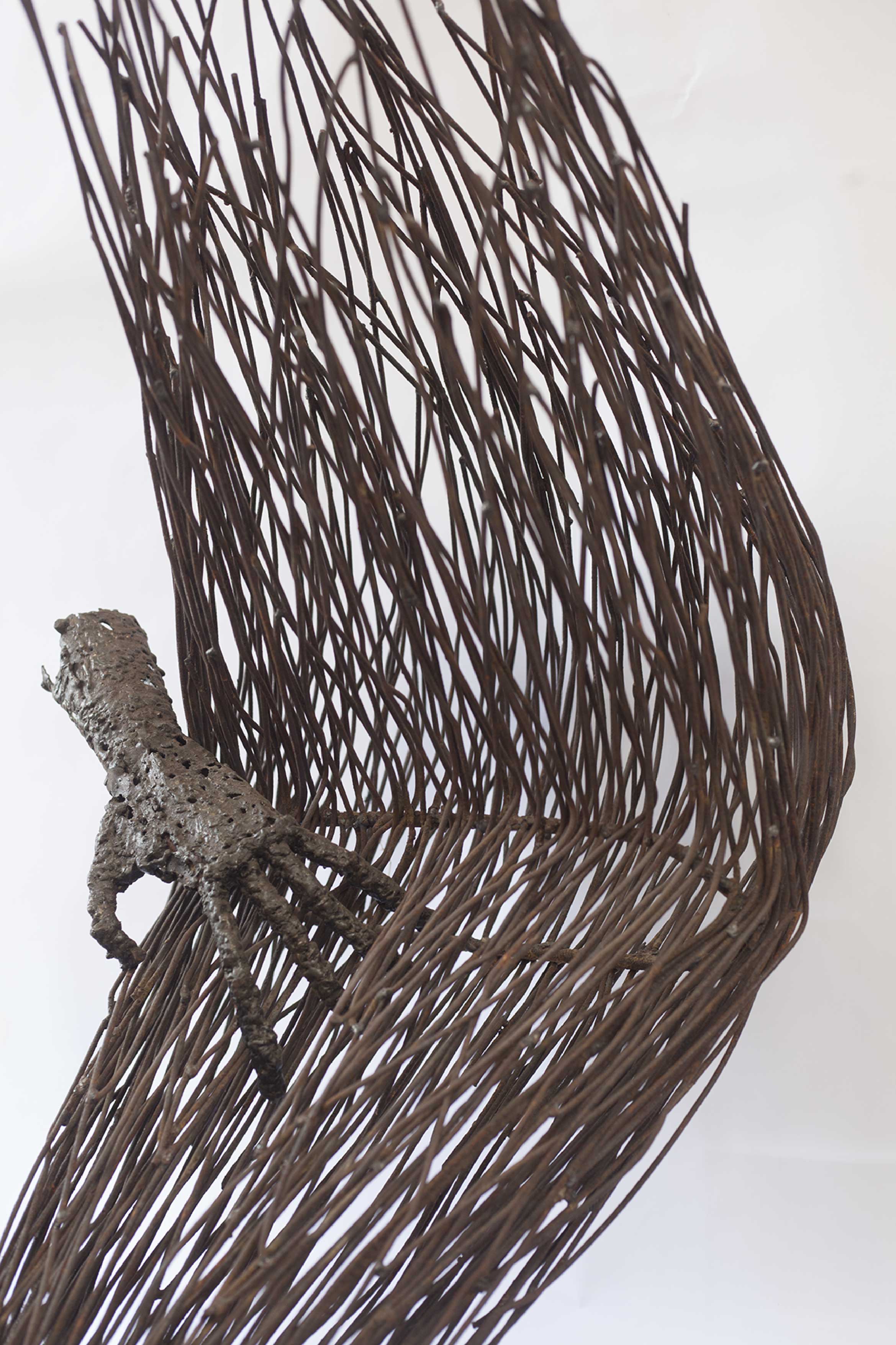

Finally the third sculpture “Be Strong, Don’t Cry”. The rotten hand is latching onto a goopy liquid located in the thoracic cage near the abdomen. To me this goop represents the person’s emotions and how they are dominated by hegemonic masculinity. More abstract than the two previous sculptures, “Be Strong, Don’t Cry” is meant to highlight the systemic nature of hegemonic masculinity.
Don’t Cry, Be Strong : 55x45x35cm


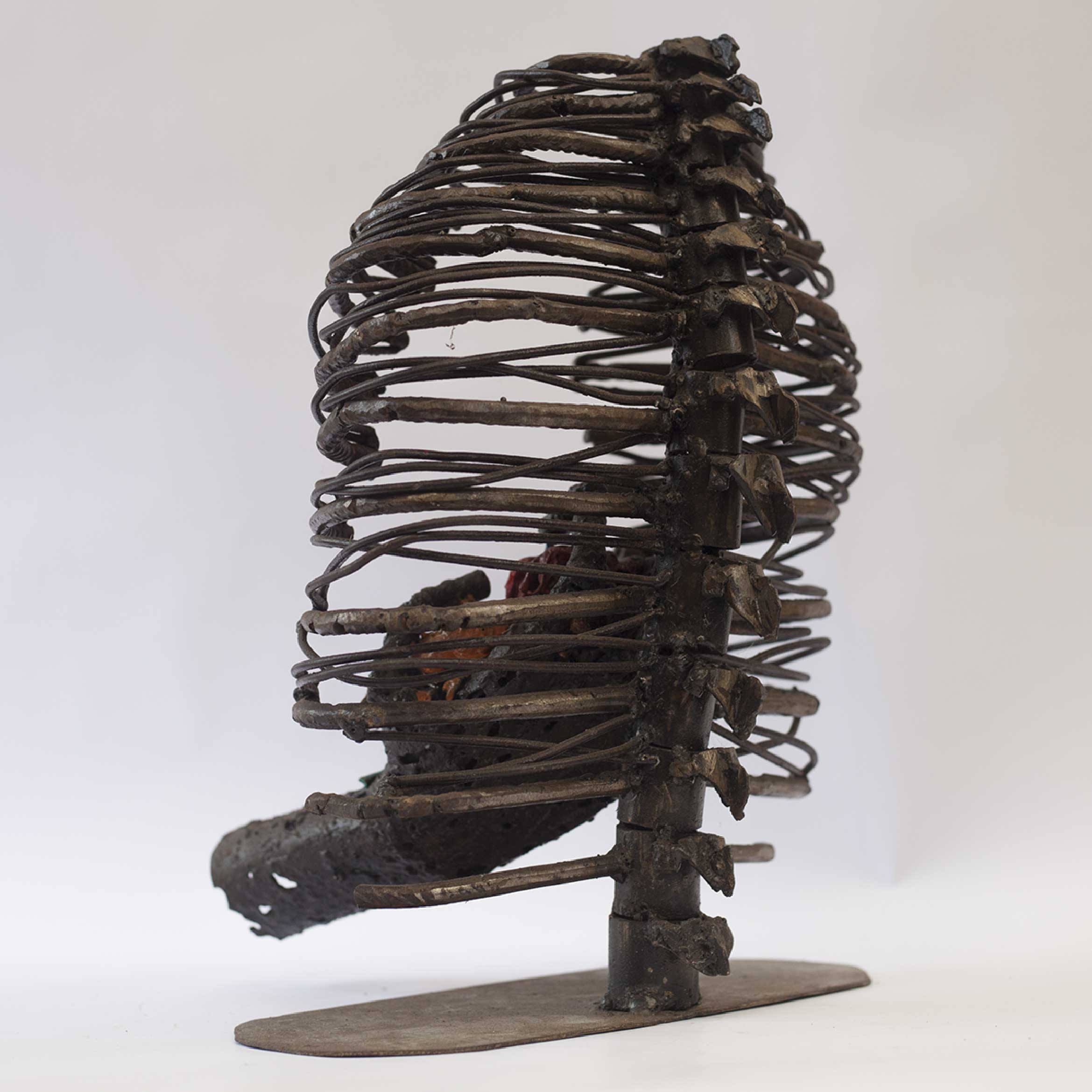
Prior to the creation of these sculptures, I researched a body of work that I want to showcase below.
Masculinity is defined as the sum of attributes, behaviors and roles associated with boys and men in society, i.e. strength, authority, sexual prowess and so on. Masculinity evolves over time and several forms exist. A person may associate with different masculinities throughout their life.
According to Australian sociologist Raewyn W. Connel, hegemonic masculinity is therefore to be understood as everything made to perpetuate masculine domination, including but not limited to a set of expectations or identities.
Hegemonic masculinity matches the current way in which people are recognized as men. It infers that men have to position themselves in relation to it, and it validates the belief that women should be submissive to men.
What results is a dominant virility pushing individuals to adopt homophobic, misogynistic, greedy, competitive and power-hungry behaviors. This dominant virility is known as toxic masculinity and feeds the need to be accepted in society. It is levied on us through culture, institutions and persuasion.
According to R.W. Connel, hegemonic masculinity distinguishes itself from other masculinities, especially subordinated masculinity (“un-virilized” men : homosexuals, intellectuals, artists, etc.). Two more forms exist. Complicit masculinity which represents men enjoying part of the privileges offered by hegemonic masculinity without fully contributing to it (i.e. worker masculinity), and marginalized masculinity : men excluded from dominant groups because of external factors such as race or handicap, tolerated in society only through the validation of the dominant group’s masculinity (i.e. black rappers).
A few key numbers :
Lucile Peytavin is a historian and member of the “Laboratoire de l’Egalité”. She wrote an essay titled “The Cost Of Virility”. According to her research, men account for 83% of the 2 million penal infractions processed by prosecutors. They account for 90% of convicts, 86% of people charged with murder, 99% of rape perpetrators, 84% of mortal traffic accidents, 95% of people charged with armed robbery and… 96,3% of inmate population. Men have a 3 to 4 times higher rate of suicide than women with an even more hightened risk in young homosexuals, transsexuals and older men.
According to a 2018 IFOP study for the Jean-Jaurès Foundation, 86% of French women have been victims of sexual assault and/or harassment in the streets which amount to 21.5 million women. A quarter of French women have been victim of sexual assault which amount to 6 million women.
Sculptures created using recovered steel and arc welding, acrylic paint and blowtorch-molten plastic.